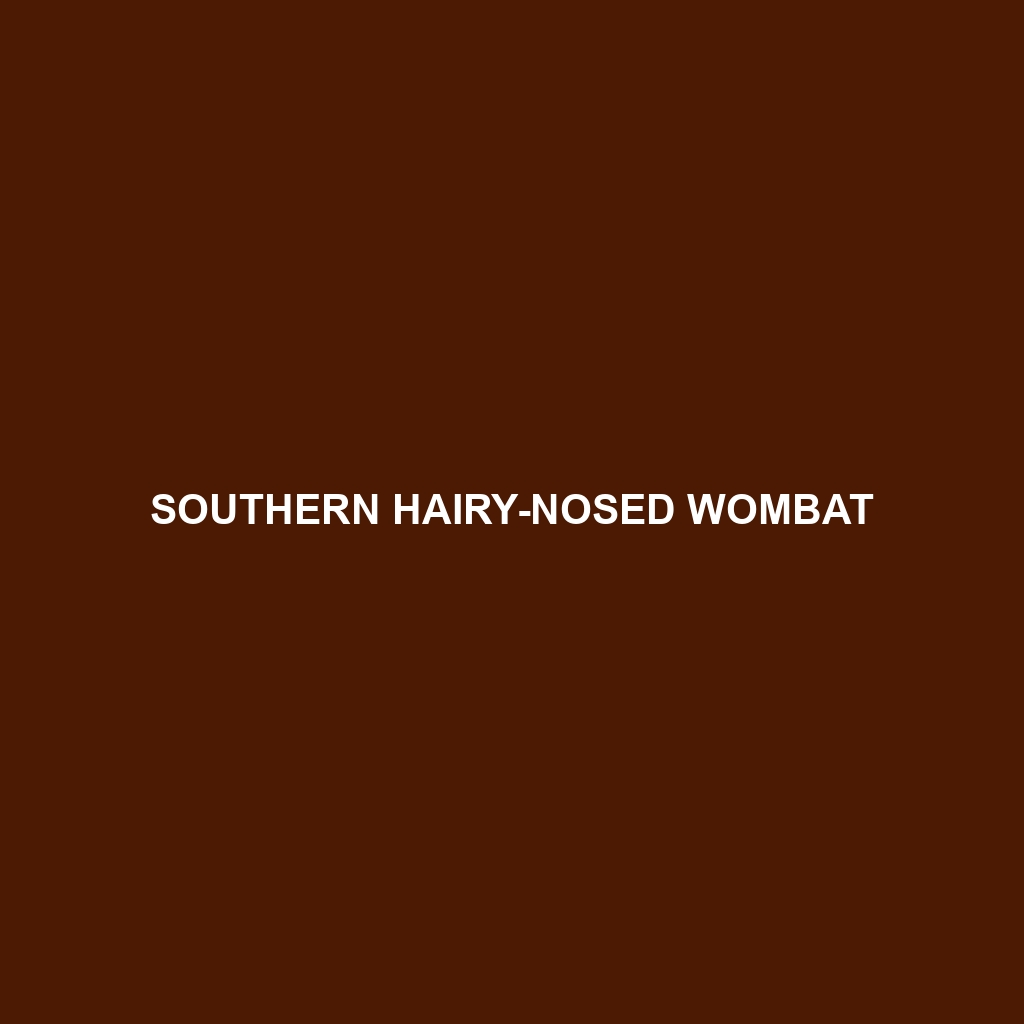Discover the remarkable Palawan Treeshrew (*Tupaia palawanensis*), a small, agile mammal native to the Philippines' Palawan archipelago. With its distinctive pointed snout, large eyes, and a diet that includes fruits and insects, this fascinating creature plays a vital role in its ecosystem. As an omnivorous forager, it aids in seed dispersal and insect population control, while facing conservation challenges due to habitat loss.
Tag: IUCN
Southern Hairy-nosed Wombat
Discover the Southern Hairy-nosed Wombat (Lasiorhinus latifrons), Australia’s smallest wombat species, renowned for its coarse fur and robust burrowing habits. With a range of unique physical traits and intriguing behaviors, this solitary marsupial plays a vital role in its arid ecosystem, all while facing conservation challenges. Join us as we explore its fascinating life and the importance of protecting this remarkable creature.
Nabarlek
Discover the Nabarlek, a fascinating little marsupial native to northern Australia, renowned for its agility and exceptional camouflage among rocky outcrops. Weighing between 1.3 to 1.7 kg, this nocturnal herbivore plays a crucial role in its ecosystem, contributing to seed dispersal and vegetation dynamics. Despite its intriguing adaptations for survival, the Nabarlek faces threats from habitat destruction and predators, highlighting the urgent need for conservation efforts to protect this elusive species.
Río Magdalena Slender Opossum
Discover the elusive Río Magdalena Slender Opossum (Marmosops magdalenae), a small marsupial native to Colombia's Magdalena River basin. With its agile movements, nocturnal lifestyle, and role in seed dispersal, this remarkable creature exemplifies the rich biodiversity of South America's tropical forests, while facing threats from habitat destruction. Learn about its unique adaptations, behaviors, and the conservation efforts needed to protect this fascinating species.
Panama Slender Opossum
Discover the Panama Slender Opossum (*Marmosops invictus*), a small, agile marsupial native to Central America's tropical forests. With its unique adaptations for nocturnal life, this elusive creature plays a vital ecological role as both a predator and a seed disperser, all while showcasing fascinating features like a prehensile tail and excellent night vision. Join us as we explore the wonders and significance of this remarkable species in its habitat.
Asian Long-tailed Porcupine
Discover the intriguing world of the Asian Long-tailed Porcupine, a medium-sized rodent thriving in the lush habitats of Southeast Asia. Known for their distinctive quills and excellent climbing abilities, these nocturnal creatures play a crucial role in their ecosystem through seed dispersal and soil aeration. Learn more about their habits, diet, and conservation status in this comprehensive blog post.
Lesser Cane Rat
Discover the fascinating world of the Lesser Cane Rat, a rodent native to the wetlands and grasslands of Western and Central Africa. With its distinctive brownish-gray fur, social behavior, and herbivorous diet, this adaptable creature plays a crucial role in its ecosystem while facing threats from habitat loss and hunting. Learn more about its physical characteristics, reproductive habits, and importance in local cultures in our latest blog post.
Crested Porcupine
Discover the intriguing world of the Crested Porcupine, a nocturnal rodent native to Africa, known for its striking quills and herbivorous diet. Explore its habitat preferences, unique behavior, and essential role in the ecosystem, as well as ongoing conservation efforts to protect this fascinating creature from threats like habitat loss and hunting. Join us in uncovering fun facts and the significance of this remarkable animal in nature!
Philippine Porcupine
Discover the fascinating life of the Philippine Porcupine (<i>Hystrix pumila</i>), a nocturnal herbivore native to the lush forests of Luzon, Mindanao, and Palawan. Known for their distinctive coat of quills and vital role in seed dispersal, these resilient creatures face threats from habitat loss and hunting. Learn about their unique adaptations, behaviors, and the importance of conservation to protect this vulnerable species.
Naked Mole-rat
Discover the remarkable world of the Naked Mole-rat (<i>Heterocephalus glaber</i>), an intriguing rodent native to East Africa known for its unique eusocial structure and impressive adaptations for underground life. With nearly hairless skin, a cooperative colony lifestyle, and a diet primarily of underground plant tubers, these fascinating creatures are not only resilient but also play a vital role in their ecosystem. Explore their conservation status and remarkable longevity, making them a subject of ongoing scientific research.









